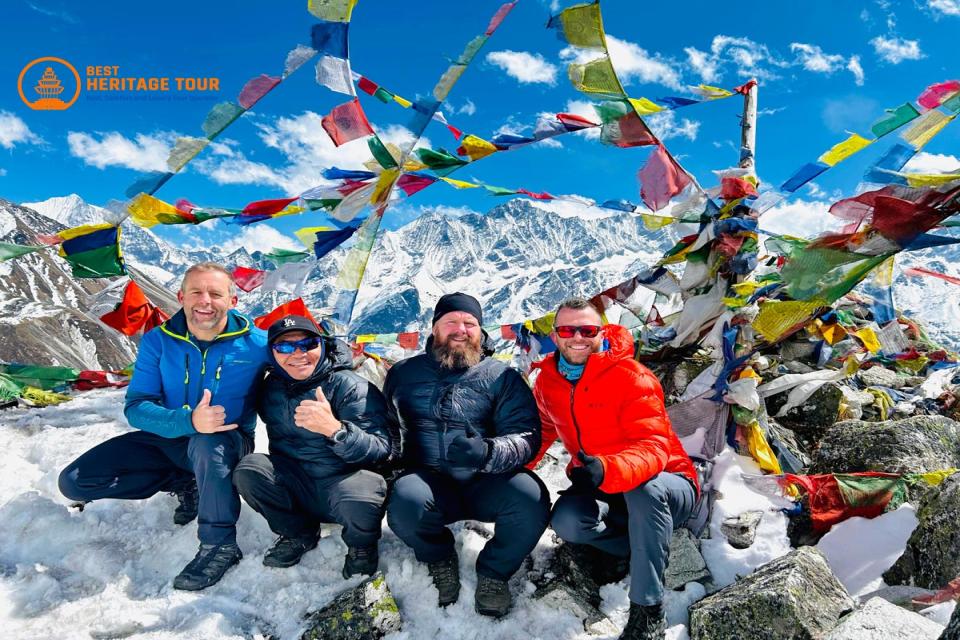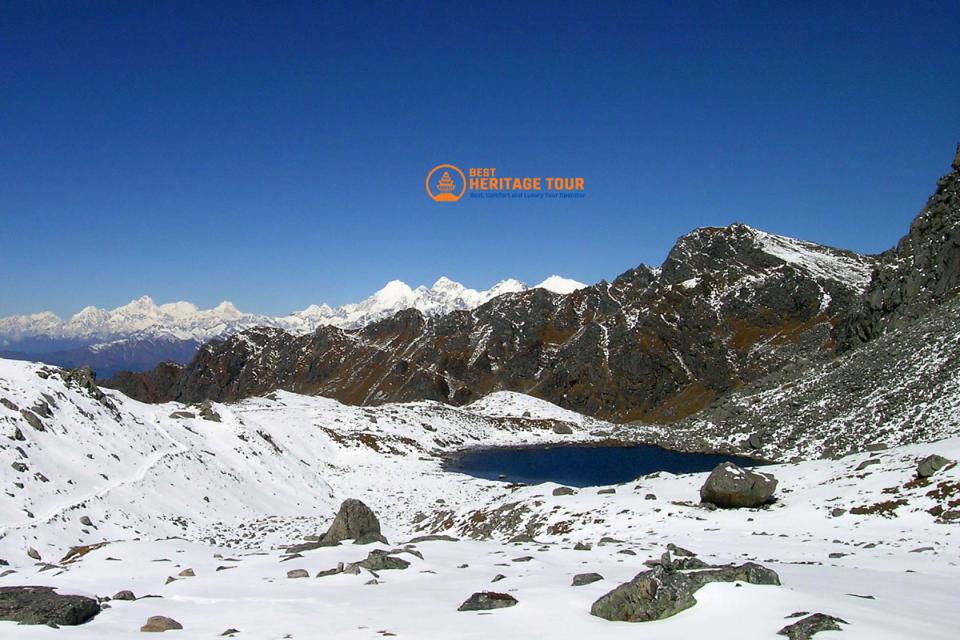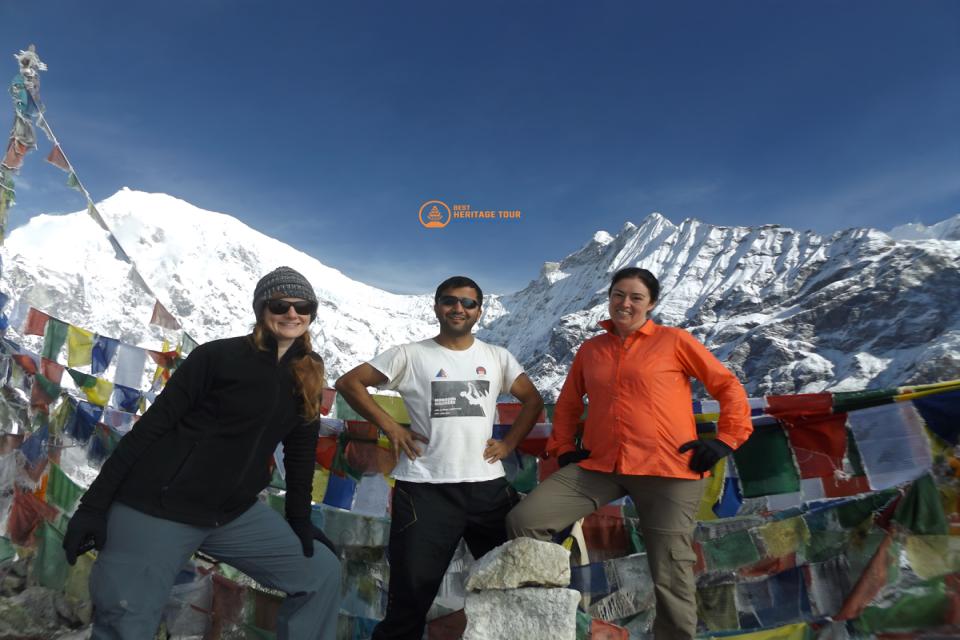The Langtang Valley trek is one of Nepal’s most accessible and scenic Himalayan journeys, offering a mix of lush forests, quaint villages, and towering peaks. If you’re planning to trek in November, understanding the weather conditions is crucial for safety, comfort, and planning. November is widely regarded as one of the best months for trekking in the Langtang Valley, but the Himalayan climate can still be unpredictable.
At Best Heritage Tour, we guide trekkers through the Langtang Valley with detailed planning to maximize comfort and minimize surprises. In this article, we provide a comprehensive overview of Langtang Valley weather in November, including temperatures, precipitation, daylight hours, and practical tips for trekking during this prime season.
Why Weather Matters in Langtang Valley
Weather is a critical factor for any trek, especially in mountainous regions like Langtang. It affects:
-
Trail conditions: Snow, ice, or muddy paths can slow progress and increase risk.
-
Accommodation availability: Harsh weather can affect teahouses and lodges.
-
Trekking pace and itinerary: Weather determines daily distance, breaks, and altitude adjustments.
-
Safety and health: Cold, wind, or sudden weather changes can lead to hypothermia or altitude-related illnesses.
Understanding the typical November weather helps trekkers pack appropriately, plan daily schedules, and enjoy the valley’s scenic beauty.
Langtang Valley Climate Overview in November
November falls in Nepal’s post-monsoon autumn season, known for clear skies, moderate temperatures, and stable weather - ideal for trekking.
1. Temperature
-
Lower altitudes (Syabrubesi, Langtang village): Average daytime temperatures range from 10°C to 18°C, while nighttime temperatures drop to 2°C-6°C.
-
Higher altitudes (Langtang Lirung Base Camp, Tserko Ri): Daytime temperatures range from 2°C to 8°C, with nighttime temperatures dropping well below -5°C.
-
Temperature decreases with altitude, so warm layers are essential for trekkers venturing above 3,000 meters.
2. Rainfall
-
November is relatively dry compared to monsoon months.
-
Occasional light snowfall can occur at higher elevations, especially late in the month.
-
Lower regions rarely see heavy rain, so trekking trails are generally dry and stable.
3. Wind Conditions
-
Moderate winds at lower altitudes provide a refreshing experience.
-
High-altitude passes and ridges can experience strong gusts, so windproof jackets are essential.
4. Daylight Hours
-
November offers 10-11 hours of daylight, giving trekkers ample time for daily hikes.
-
Sunrise occurs around 6:00 AM, and sunset around 5:15 PM, which is helpful for planning early starts and evening stops.
Advantages of Trekking Langtang in November
1. Clear Skies and Panoramic Views
November is one of the clearest months in the Langtang region. Snow-capped peaks like Langtang Lirung, Ganesh Himal, and Shishapangma are visible, making photography and sightseeing ideal.
2. Comfortable Temperatures
The moderate daytime temperatures allow trekking without overheating in thick layers while providing cool nights perfect for cozy teahouse stays.
3. Low Crowds
Compared to peak autumn weeks in October, November tends to have fewer trekkers, offering a more peaceful trail experience while still benefiting from favorable weather.
4. Stable Trail Conditions
Post-monsoon trails are generally dry and firm. Snow may appear only in higher elevations, so most teahouses and paths remain accessible without specialized equipment.
Challenges to Consider
Even in November, trekkers should be aware of potential challenges:
-
Cold Nights: Temperatures can drop below freezing at higher elevations, requiring insulated sleeping bags and warm clothing.
-
Occasional Snow: Light snowfall at high altitudes may make trails slippery, so trekking poles and sturdy boots are recommended.
-
Shorter Days: While daylight is sufficient, days are shorter than in peak summer, so early starts are advised.
-
Altitude Effects: Higher elevations still pose risks of mild altitude sickness; gradual ascent is recommended.
Practical Packing and Gear Tips
For November trekking in Langtang Valley, consider the following gear and clothing:
Clothing
-
Base layers: Moisture-wicking thermal tops and bottoms.
-
Mid-layers: Fleece jackets or insulated jackets.
-
Outer layers: Windproof and waterproof jacket and pants.
-
Headgear: Warm hat, gloves, and scarf or neck gaiter.
-
Footwear: Insulated trekking boots with good grip, warm socks.
Gear
-
Sleeping bag rated for sub-zero temperatures (especially for high camps).
-
Trekking poles for stability on icy or snowy patches.
-
Sunglasses and sunscreen to protect from strong Himalayan sunlight and glare from snow.
-
Hydration system: Water bottles or thermos to prevent freezing.
Health and Safety Considerations
-
Stay hydrated: Cold weather often masks dehydration.
-
Protect against sun exposure: Snow reflects sunlight, increasing UV exposure.
-
Monitor altitude sickness symptoms: Headache, nausea, or dizziness can occur above 3,000 meters.
-
Plan daily itineraries with buffer time in case of sudden weather changes.
Langtang Valley Trekking Itinerary Considerations
When trekking in November, itineraries can take advantage of favorable weather:
-
Shorter days: Plan hikes with realistic distances to avoid trekking in darkness.
-
Accommodation: Pre-book teahouses, as November is still considered a trekking season.
-
Flexibility: Keep extra days as a buffer for rest or weather delays.
At Best Heritage Tour, we provide carefully planned itineraries for November treks, including altitude acclimatization, teahouse bookings, and local insights to enhance your experience.
Why November is Ideal for Photography
-
Clear skies offer unobstructed mountain views.
-
Snow-capped peaks contrast beautifully with autumn forests.
-
Golden sunlight in mornings and evenings enhances landscape photography.
Tips to Make the Most of Your November Trek
-
Start early each day: Maximize daylight and avoid afternoon clouds.
-
Dress in layers: Easily adjust to temperature changes during the day.
-
Carry snacks and water: Energy is essential in cold conditions.
-
Use trekking poles: Helps balance on icy sections.
-
Plan for acclimatization: Include rest days to prevent altitude sickness.
Conclusion
November is an excellent time to explore the Langtang Valley. With clear skies, moderate temperatures, and stable trails, it offers a safe and memorable trekking experience. Proper preparation, warm clothing, and awareness of the weather will ensure you enjoy the best the Himalayas have to offer.
At Best Heritage Tour, we provide expertly guided Langtang Valley trekking packages, ensuring safe, comfortable, and unforgettable Himalayan adventures. Our itineraries are tailored to maximize scenic views, ensure acclimatization, and provide local insights.
Phone / WhatsApp / Viber: +977‑9851149197 / +977‑9810043046
Email: info@bestheritagetour.com / bestheritagetour@gmail.com
Website: www.bestheritagetour.com
Office: Thamel Marg, Kathmandu, Nepal
Author: Best Heritage Tour
Date: 30th October, 2025




